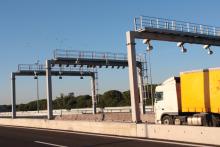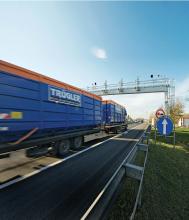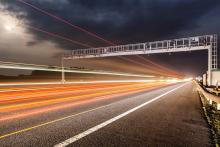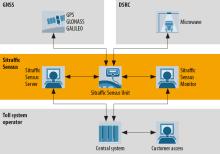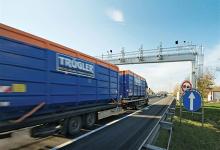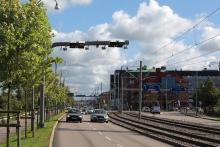Leading European tolling solution companies are involved in a number of innovative tolling projects across the continent and further afield. Guy Woodford looks at some of the latest Siemens Mobility & Logistics (SML) has received orders from Eurotoll and Total, two of France’s largest electronic toll on-board unit issuers, to supply technology for the new French toll collection system. The equipment comprises on-board units for the vehicles as well as the electronic detection system. The SML orders’, worth
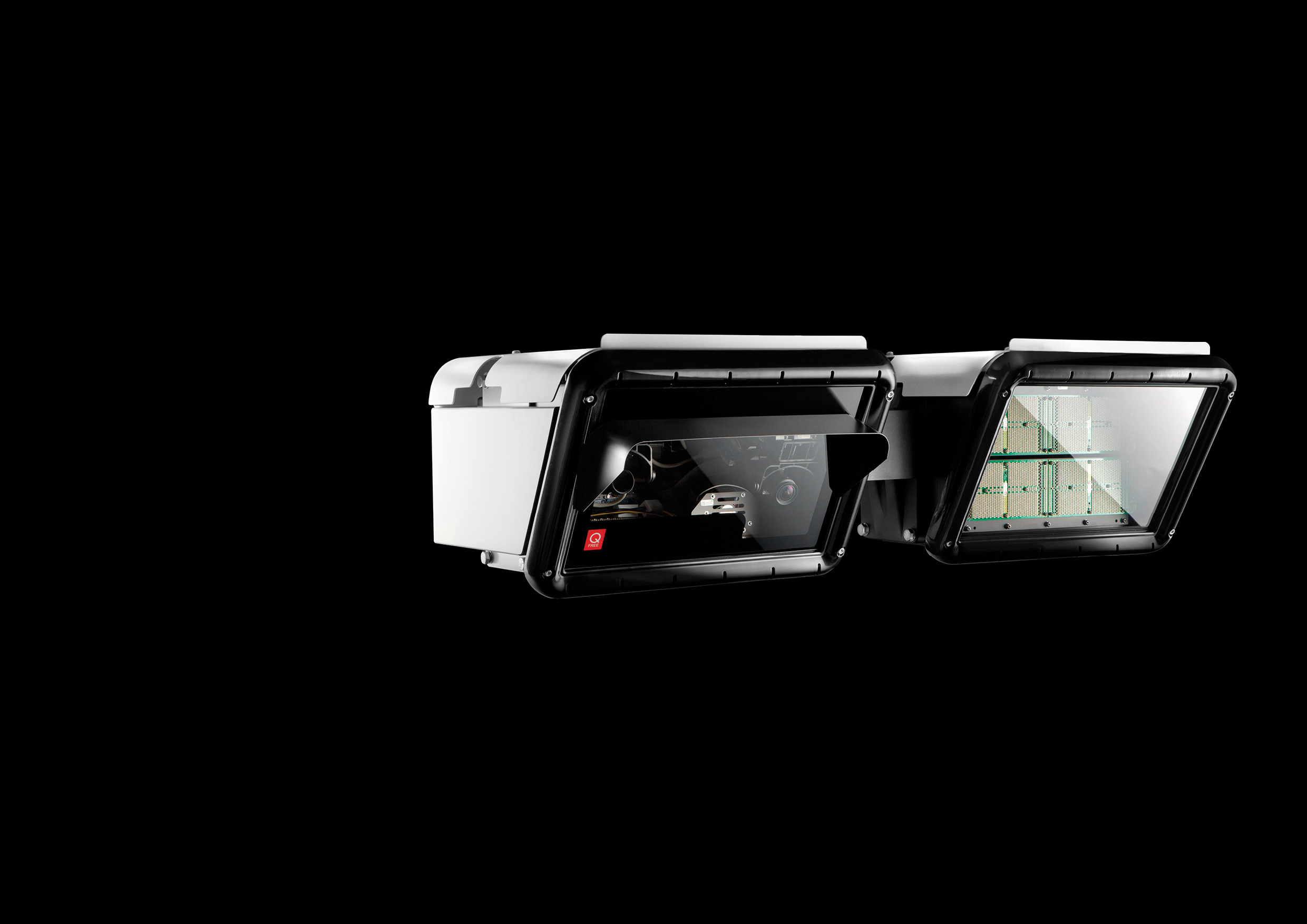
A Q-Free single-gantry tolling system is being installed for the congestion charge scheme in Gothenburg, Sweden
Leading European tolling solution companies are involved in a number of innovative tolling projects across the continent and further afield. Guy Woodford looks at some of the latest
The equipment comprises on-board units for the vehicles as well as the electronic detection system. The SML orders’, worth a combined €50 million, are part of the Ecotax project set to see the introduction from mid-2013 of mileage-based taxation on French national roads and some country roads for trucks weighing 3.5tonnes and over. The taxation will be in addition to the highways, bridges and tunnels already subject to toll payments.
The monitored French road network comprises around 10,000km. In contrast to conventional microwave systems, satellite-based tolling systems directly detect the position of the vehicles via the onboard units by using GPS satellite signals which are encrypted and transferred by GSM mobile telephony to the control centre for further processing.
This satellite-based technology is therefore said by SML to be especially suitable for extensive road networks beyond the scope of the highways. Toll gantries are not required for data capture. The technology offers not only the accurate charging of distance and time-related tolls, but also the flexible adaptation by means of software updates.
In 2010, SML developed and supplied an area-wide satellite-based toll collection system for Slovakia and has completed other toll projects, such as in London, Tel Aviv and in the Seattle area of U.S. state Washington. Thanks to the introduction of London’s toll system in 2003, 60,000 fewer motor vehicles than before are said by SML to be driving along the English capital’s streets. Traffic volume in London is said by SML to have declined by 2% since 2003, with traffic jam incidents down by around 30%
Since 2011, the toll fees for a special lane on the highway from Jerusalem to Tel Aviv are automatically adjusted to reflect the traffic situation, thereby guaranteeing an average speed of 70km/h. When too many cars move into the toll lane, the toll increases and the lane empties out again.
Meanwhile, SML claims the installation of its satellite-based toll collection system in the Seattle conurbation is the world's first system to combine real-time vehicle positioning with toll calculation based on time and distance.
Tolling is one of the collaboration areas where SML is working together with Atos as part of a strategic partnership initiated in July 2011, which focuses on leveraging sales synergies and jointly developing new innovative solutions.
Speaking about SML’s current trading emphasis Karl Strasser, head of the international tolling business within SML, said: “We are currently focusing on the European market because of the size and complexity of the projects.
“Europe has a clear direction in implementing country wide tolling solutions like in countries such as France, Austria, and Slovakia. And for these kind of solutions we have the right technological answer in providing a GNSS Tolling Solution (Global Navigation Satellite based System). There are many European countries like Belgium, Denmark, and Hungary that are planning to introduce such a system in the coming years.”
On how SML was going about establishing a greater tolling market share in Europe, he added: “It is a tough market but the feedback from our customers shows us that we are making the right steps. After the very successful implementation of the Slovakian Truck Tolling System, we have developed a GNSS On Board Unit that is probably best in class at present.”
Strasser also pointed to SML’s success in winning the contract to deliver electronic tolling technology for the Ecotax satellite-based tolling project in France as an example of SML’s prominent position in Europe’s tolling solutions market.
“Portugal has been an interesting market for us for a very long time,” said Michael Gschnitzer, sales director of Kapsch TrafficCom. “Many years ago, Kapsch made the existing toll collection system in Portugal [Dedicated Short Range Communication - DSRC systems] compatible with the rest of Europe.”
More than 500 lanes within the Brisa road network are now equipped with Kapsch single-lane transciever technology. Kapsch transcievers are also used for fee collection in parking area as well as at gas stations.”
Tolling cost hike
The cost of road tolls in Bosnia is a hot topic after Ensad Karic, director of Bosnian motorways company
Prices for personal vehicles will increase from €1.02 to €2.14 (BAM 2 to BAM 4.20) on the Sarajevo-Zenica 37km motorway
The Kapsch roadside equipment is a subpart of a Multi-Lane Freeflow Tolling (MLFF) System and comprises the elements located on the highway necessary to collect data from vehicles to charge their journeys accordingly. Additionally, a central component is responsible for communicating with the operational back office (OBO) for transfer of tolling relevant data. It also provides means and applications for monitoring and configuration of the different tolling points. The supplier is responsible for the architecture definition and full solution sizing. The architecture design and sizing of the proposed solution is said by Kapsch to comply with the requirements of the Request for Proposals (RFP) provided by Ascendi, while also following the best practices applicable. The roadside equipment will work autonomously, assuming that it was correctly configured with the required data and parameters.
Vehicles driving through will be detected by the roadside equipment and all necessary operations to collect data are made for creating a transaction record. The transaction record is used to charge the journey according to the rules and tariffs of the toll scheme. Since there is currently no on-board unit (OBU) obligatory within the system, the roadside equipment builds the toll transaction record either if the vehicles driving trough are identified by a DSRC OBU (constraining all relevant vehicle and payment data) or, alternatively, by the information of the front and rear license plate number.
According to Kapsch TrafficCom area sales manager Mario Ralón, the Austrian-headquartered firm is engaged on all levels of the Portuguese electronic tolling system, the local Via Verde System.
“There are now more than 2.7 million on-board units in use on Portuguese roads of which Kapsch TrafficCom has delivered more than 450,000 units to date. Since all infrastructure operators interact commercially with Via Verde, the on-board unit issuer, the delivery of the first Kapsch MLFF system in Pinhal Interior was a logical step that guarantees smooth interoperability with other systems around Europe,” said Ralón.
Originally the 2010 introduction of modern DSRC technology with new OBUs’ made the implementation of the MLFF systems in Portugal possible. With the new generation of MLFF roadside systems for all vehicle tolling, Kapsch TrafficCom’s engagement is said by the firm to be consolidated at all levels.
A
Frank Kjelsli, Q-Free’s business development manager, said: “The Single-Gantry solution from Q-Free represents a quantum leap when it comes to efficient road user charging and enforcement in all modes of operation, including urban and highway charging and applications for advanced transportation management.
“Traditional highway tolling has existed for years. Technology is available in all forms and shapes and, on many occasions, the highway and road users have adjusted to the limitations of available technology. This has to change. It is obvious that old traditional toll plazas with barriers are not suitable for an urban environment, but not even all free flow (ORT) systems are designed for challenges you meet when road user charging expands from the highway to the city.”
Q-Free’s Single-Gantry free flow tolling system is said to have “next generation” technology in high performance video identification, radio systems and automatic license plate recognition (ALPR) software to collect toll data.
“A single-gantry solves the challenges in urban environments, like for instance the limitation of space,” explained Kjelsli. “The less space in urban cities you need the better. The technology needs to adjust to the existing environment and not vice versa, as may be the situation for highway tolling so far. In addition to ‘less is more’, there are also strong requirements from the public and politicians on the aesthetics, the infrastructure and maintenance.”
Kjelsli said that when “physical challenges” are solved, the next task is to review how the system shall perform given urban driving and charging patterns, which are more complex than what you experience on a highway.
“Dealing with congestion and stop and go traffic is only one of the challenges,” said Kjelsli. “Q-Free has introduced the ‘charging zone’ concept in its new Single-Gantry solution. This means that only vehicles within a defined footprint are identified and charged based on their onward progress. This eliminates risk for wrongly charging vehicles that, for example, leave the road into a non-chargeable route. Traditional systems do not offer this kind of functionality, as they are designed to charge at one specific point at the road.
“Working independently or together with the radio system the single gantry system features the best possible performance and redundancy in video technology. Video identification will not only be used for enforcement. They are also able to handle charging through video tolling, hence the video system will remain, a key system component in applications like congestion charging.”
Q-Free is said by Kjelsli to have the most suitable, professional and advanced imaging solution for road user charging. This solution is based on a combination of advanced camera and image processing technology where the cameras track each individual vehicle as they enter and leave the charging zone. This ensures that the system even captures irregular traffic, such as lane changes and turning vehicles. As such, the imaging system is said to deliver accurate and reliable front and rear pictures of vehicle license plates, independent of weather conditions and variations within the license plates’ population.

